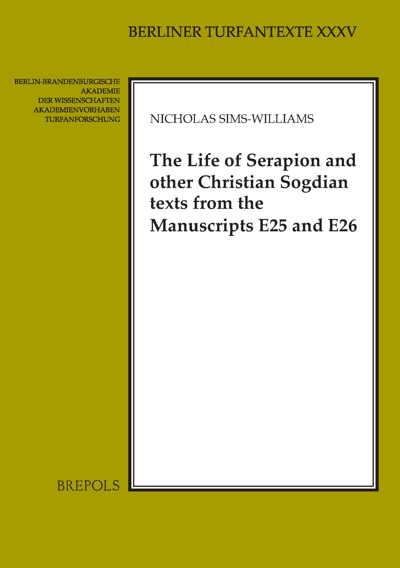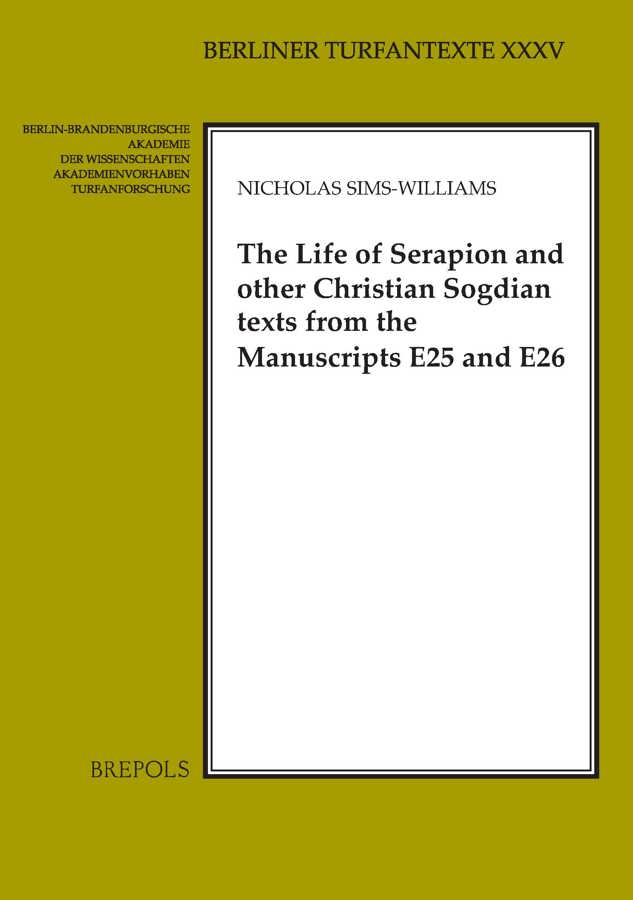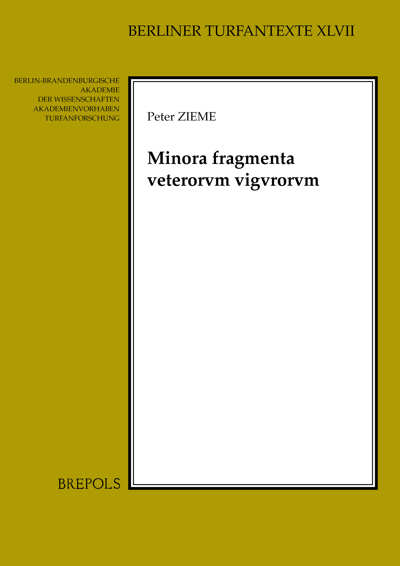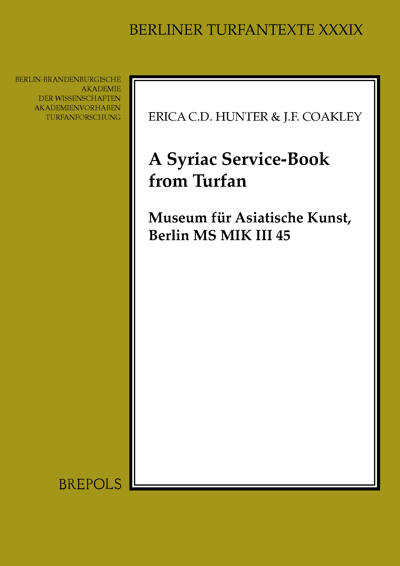
The Life of Serapion and other Christian Sogdian texts from the manuscripts E25 and E26
Nicholas Sims - Williams (ed)
- Pages: 298 p.
- Size:210 x 297 mm
- Illustrations:11 b/w
- Language(s):English
- Publication Year:2015
- € 95,00 EXCL. VAT RETAIL PRICE
- ISBN: 978-2-503-55536-2
- Paperback
- Available
“In brief, the edition of the manuscripts constituting E25 and E26 is valuable not only for the light it sheds on the Sogdian language and the community of Sogdian Christians in Turfan, but also as a contribution to Syriac literary history, where Sogdian plays an important role as an early witness to Syriac works otherwise lost or attested only later.” (Adam Benkato, in Orientalistische Literaturzeitung, 112/3, 2017, p. 259)
« Ce travail se termine par un glossaire complet précédé de notes grammaticales, une bibliographie et un index des différents termes analysés. Onze planches de photos agrémentent également ce livre qui constitue un document précieux sur les langues iraniennes et syriaque, mais aussi pour notre connaissance de l’histoire de l’Asie centrale et des Églises orientales.» (Florence Jullien, dans Abstracta Iranica. 37-38-39, 2018)
« Le présent ouvrage de Nicholas Sims-Williams est une contribution incontournable dans le domaine de la littérature sogdienne chrétienne. » (Damien Labadie, dans Apocrypha, 31, 2020, p. 247)
The Sogdian texts published in this volume are of interest and importance in various ways. The Life of Serapion is particularly significant from a linguistic point of view, being a close translation of a known Syriac text, so that its rare words and unusual grammatical forms can be interpreted with confidence. The Life of John of Dailam, on the other hand, differs substantially from the surviving Syriac versions and preserves details unrecorded elsewhere concerning the history of western Iran in the early Islamic period. A text on omens represents an extremely ancient, pre-Christian survival, with clear parallels not only in Syriac but even in Babylonian omen texts, while a refutation of Manichaeism sheds light on the attitude of the Christian community in the Turfan oasis towards their Manichaean neighbours. All these texts are provided with translation and detailed commentary, and the volume concludes with grammatical notes, complete glossary, bibliography, index of words discussed, and eleven plates. This work will be of interest to specialists in Iranian languages, mediaeval Iran and Central Asia, Syriac literature and the history of the "Church of the East".




